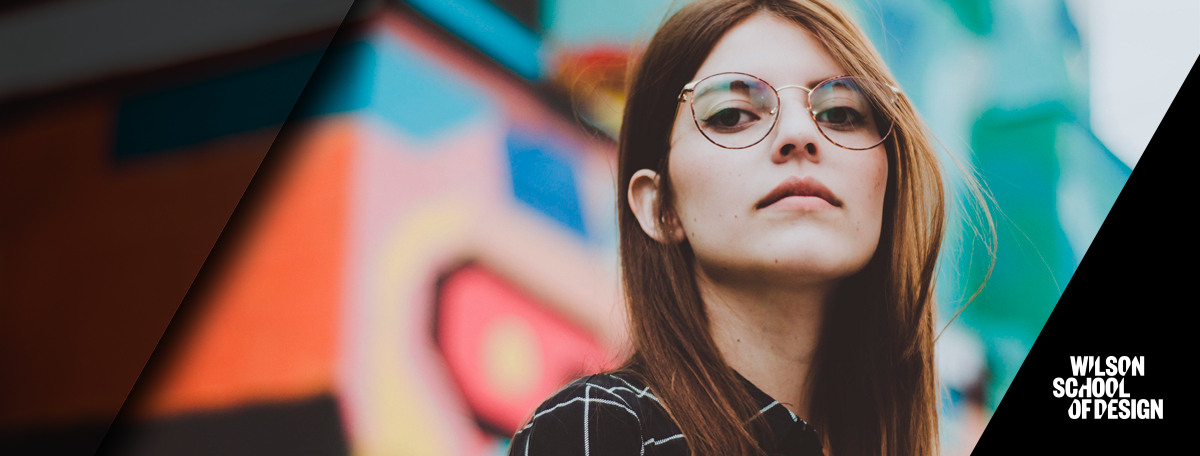
The range of classes offered as part of the Foundations in Design program gives students many opportunities to push their creative boundaries, while developing valuable design skills. Check out some of the inspiring student work showcased in the courses below:
Design Processes, Methods & Materials
Students learn fundamental design processes and use basic visualization and modelling methods and materials common to a variety of design disciplines. They learn and apply the elements and principles of design, creative conceptualization, problem-solving, and critical thinking skills. Students explore a variety of basic techniques, mediums and materials in two and three-dimensional contexts.


Design Explorations
Students examine design-related issues, theories and practices as a basis for expanding their knowledge of the field of design. They participate in seminar discussions and project work to promote communication, research, team building, and critical thinking. Students also investigate opportunities for continuing design studies and potential career options.

Drawing for Design
Students focus on drawing as a foundation for design and learn the methods, tools, and vocabulary of visualization, drawing and rendering. They explore the role of visualizing and rendering in understanding and communicating ideas in visual form. Students apply what they learn to project work that relates to a range of design disciplines.

Colour Theories
Students learn colour theories and explore their application within design contexts. They review and examine the physical characteristics, psychological effects, and the cultural and social implications of colour.


Communication Through Visual Language
Students explore the historical, theoretical and contextual developments of signs and symbols (semiotics) as they relate to visual language. They study the concepts, theories and roles that text and images play in contemporary visual information and communication across a variety of design disciplines.

Design History: 19th Century Onward
Students examine developments in architecture, graphic design, interior design, product design, fashion design, and fine arts from the Industrial Revolution to the present day, primarily in the context of the Western world. They utilize concepts from design and fine art history, sociology, and cultural anthropology to analyze examples of design, as well as the ideologies, theories, and social factors that have influenced designers, design movements, and consumers of design.
Design Connections: Then and Now
Students examine the ways in which the past and present are connected through designed objects, particularly how designs from the past have inspired contemporary design ideas. They analyze examples of design in the context of various world cultures, consider design influences throughout history, and investigate issues relating to cultural appropriation.


2D Design
Students design solutions for a series of comprehensive, two-dimensional projects that emphasize the development of creative conceptualization and problem-solving skills relating to a range of design disciplines. They create designs for a variety of contexts and utilize diverse mediums, materials and presentation methods.


3D Design
Students apply creative conceptualization and problem-solving skills to comprehensive three-dimensional design projects. They explore principles and processes, mediums and materials as well as three-dimensional modelling techniques and presentation methods relating to a range of design disciplines.





Designing for Humanity
Students examine the relationship between design decisions, humanity and current and historical environmental issues. They understand the way design impacts individuals, society and the environment through research, case studies and field trips. Students also investigate such things as over-packaging, built-in obsolescence, toxic materials and sustainable development.

Drafting for Design
Students learn to produce drawings using computer assisted drafting software relating to a variety of design disciplines. They create two- and three-dimensional drawings that communicate design ideas visually through a variety of design projects.

Introduction to Digital Studio Using Macintosh
NEW COURSE!
Students learn to use industry-standard, design-related software such as Adobe Photoshop, Illustrator, and InDesign on a Macintosh computer platform. They explore the creative potential of software applications and tools to articulate their design ideas and enhance problem-solving abilities. Students originate and edit digital photography, capture and manipulate text and image, produce and present digital design solutions, and create a digital design portfolio.